The Portuguese postcard, the jumble of houses, red roofs downhill towards the river, crowned by the stone walls of a castle and a mighty red bridge that contrasts with the stillness blue of the river Tagus. That is Lisbon, the capital city of Portugal and gateway to a country with marvels to unravel. But the city itself has something for everyone: History, of one of the most ancient capital cities in Portugal and beacon to the Discovery Era, viewpoints, as it is the city of seven hills, cultural displays, from theater, concerts to modern and street art, varied gastronomy, from all corners of the world, really, and even unique shops, from glamorous brands to regional crafts. Set up like a true explorer and go through this list of the best things to do in this fascinating city!
1. Sit back and enjoy the view
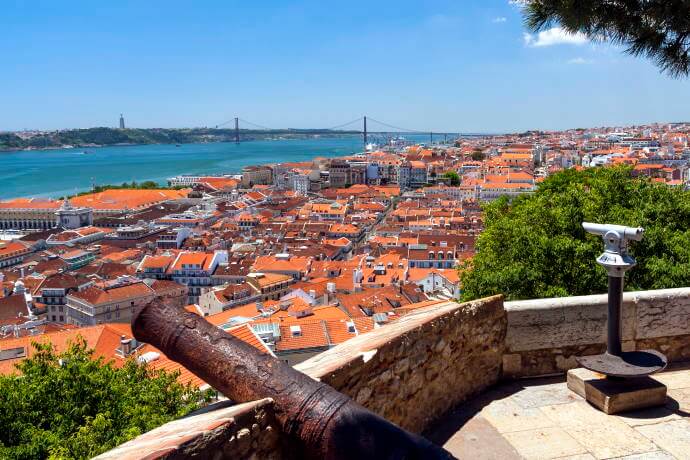
Well, not quite. Lisbon has several viewpoints where you can relax and admire the downtown area. However, to achieve this reward, you will have a steep climb ahead of you. The trams, funiculars and outdoor escalators ease this effort and we guarantee it is worthwhile. A viewpoint in Portugal is named “miradouro”, that comes from the latin mirare, to look upon with admiration. The Miradouro das Portas do Sol is one of the most pleasant ones, as well as the Miradouro Santa Luzia, and these are both in route with the tram 28. Further up, the Miradouro da Graça is known for the outdoor musicians that set the mood for the view. The same for the Jardim São Pedro de Alcântara, on the opposite hill, near Principe Real. Miradouro da Senhora do Monte is a more challenging climb, but it is indeed our top favorite, since, from here, you can look upon the houses in Alfama and Graça neighbourhoods, but also the castle. The castle has its own viewpoint of course and on Miradouro Jardim do Torel, you will find a pleasant, tranquil garden with a lovely view.
2. Just walk ahead and delve in the historic neighbourhoods
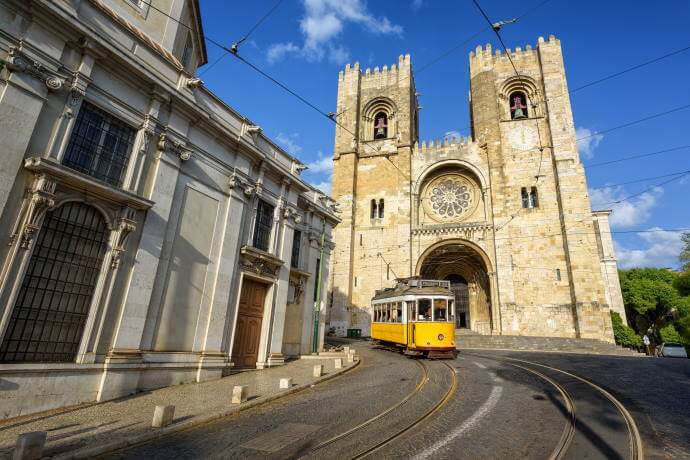
Alfama survived the infamous 1755 earthquake, which means that some of the buildings and architecture date back to the medieval times and under Moorish influence. The name itself, for instance, derives fom “Al-hamma”, which means good water. And there are several historic fountains to be found there, such as the Chafariz de El-Rei and the Chafariz de Dentro. But the magic of Alfama is indeed to wander the streets, turning at each archway, backstreet and lane, admiring the labyrinthic structures and the colourful quaint houses. If you continue to walk towards the castle, Alfama will then merge into Graça, a neighbourhood that grew after said earthquake. At the highest hill of Lisbon, here it is possible to relax at parks and viewpoints, go to small shops and watch the trams go by. The Jardim da Cerca da Graça is a park that connects Graça to Mouraria, another neighbourhood, which, just like Alfama, is known for its narrow winding streets, and that owes its name since it was where the moors lived after the conquest of Lisbon. Those times are long gone and after that, Mouraria saw the birth of Fado, a unique cultural expression, and is now one of the most multicultural parts of Lisbon. In the Beco da Achada, you will find the example of a standing medieval house, a link to the past in these areas of the city.
3. Enjoy a Fado Performance
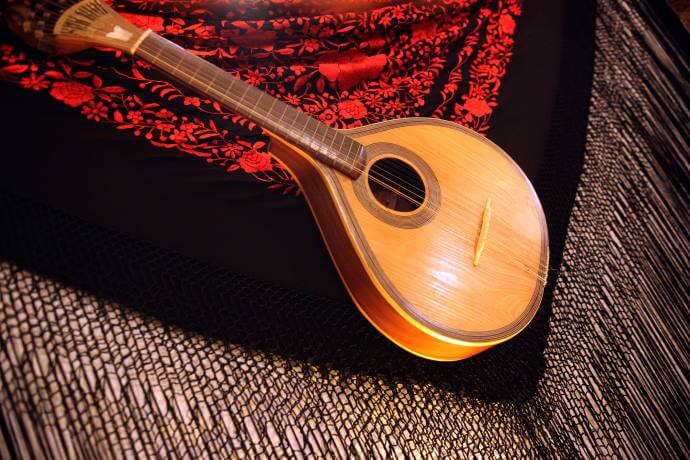
Speaking of the birth of Fado, to better understand the city and go to the depths of the Portuguese soul, it is essential to experience a performance. Even though it is sung in Portuguese, the stroke of the guitar chords, the melody in the voice will definitely resonate with you. Fado is traditionally known for its melancholy and longing – saudade, if you will – but there are also others that express the joys of love and simple life. Whilst there are some touristic venues, there are also places where you can experience Fado in its purest, authentic and impromptu form, so don’t be so quick to dismiss it as touristy. Should you wish to deepen your knowledge of this art and expression, be sure to visit the Fado Museum, in Alfama.
4. Walk along the river
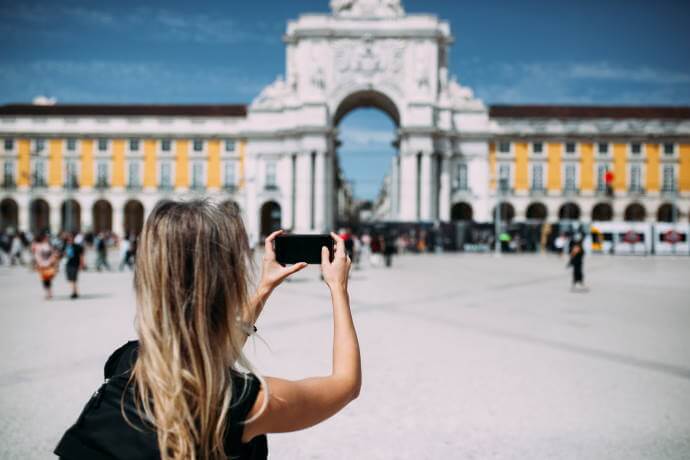
When walking around Lisbon, you path will most certainly meet with the river, the beautiful Tagus river, that witnessed the changes in the city and provided for it for several generations. And, today, it is possible to enjoy the fresh breeze by walking along the path of Avenida Ribeira das Naus, a place where plenty happens, especially if the weather is sunny. You can sit on the riverside steps, grab a fresh beverage, relax on the grass areas and just be. At the end of the Avenue, the path opens to the imposing Praça do Comércio, a square also known as Terreiro do Paço, since it used to house the royal palace. It was the gateway to Lisbon by the sea in the Discoveries, and from where the Portuguese ships departed, now signed with the Cais das Colunas. The square, like other parts of the city, had to be rebuilt in the 18th century, giving place to symmetrical yellow buildings and archways that encircle it and now house several ministries and government offices. You can ascend to the top of the Rua Augusta Arch, at the centre, for a marvelous view over the square and the downtown area.
5. Have a Bica
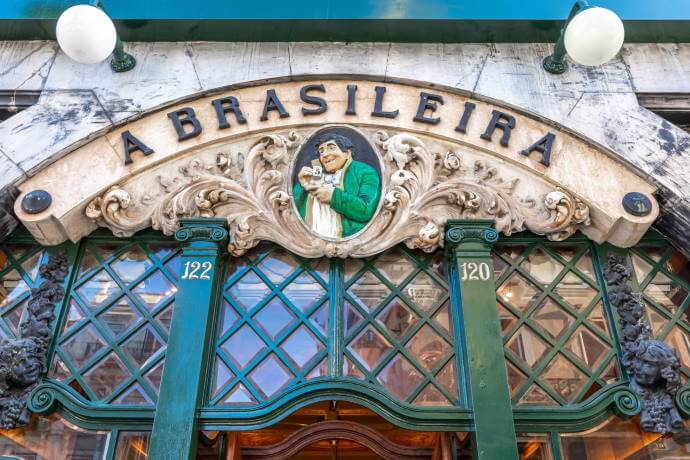
In Lisbon, a cup of coffee is known as bica (bee-ca) and it is part of the daily routine, after every meal, to meet up with friends, to relax while reading the newspaper or a book. Many writers and artists lived in Lisbon and were frequent customers of some places, which elevated their reputation. Fernando Pessoa was one of these figures and many cafés he used to visit are now renown for it. From the Brasileira café, in Chiado, to the Martinho da Arcada, at the corner of Praça do Comércio, there are plenty historic cafés in Lisbon, such as the Confeiraria Nacional, Café Nicola and the Pastelaria Benard. Aside from the bica, there is a traditional pastry option specialty of the house, so take a seat and indulge in the delicacies. Bica is also the name of one of Lisbon’s neighbourhoods.
6. Sample a pastel de Belém

We couldn’t possibly mention pastries without referring to the pastel de Belém, which has been taken with the Portuguese all around the world and is famously known as “Portuguese tart”. The crunchy pastry dough, the sweet and fresh filling…well, while in Lisbon you must visit the original Confeitaria dos Pastéis de Belém. These sweets have been making the delights of locals and tourists alike since 1837 and its origin dates back to the monasteries. So, after a walk in Belém, the quarter dedicated to the Portuguese Discoveries, vising the Jerónimos Monastery and its beautiful cloisters, the Belém Tower and the Padrão dos Descobrimentos, shaped like a sail, treat yourself to one, or even two, of these. If you love art, nearby, at the CCB, you will also find several interesting contemporary art displays.
7. Visit the Markets
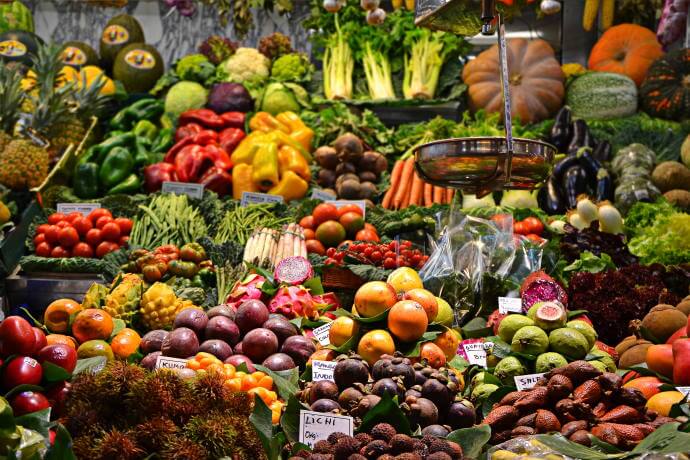
Lisbon has several outdoor markets, all very different from one another, but each and every one part of the city life. The fruit and vegetable markets are still much part of the city and you can find these in neighborhoods like Campo de Ourique or Alvalade. The Mercado da Ribeira is split in two and now hosts your local market, with food stalls, and also a market hall with some selected restaurants in the city, catering some of its specialties in just one space. A good sample of the city’s culinary panorama. If you love thrift shopping, be sure to head to Feira da Ladra, in Campo de Santa Clara, on Tuesdays and Saturdays, where used objects of all sorts, true findings can be purchased. In the Lx Factory several artists and artisans gather every Sunday to sell their creations on an outdoor market.
8. Explore the green lungs of the city
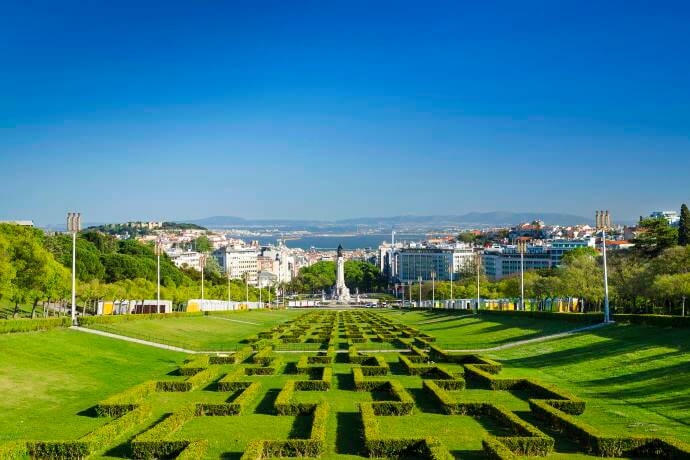
One of the most appreciated parts of the city of Lisbon are its parks. Green spaces that dot the map with more color and provide scenarios for leisure walks, shade in the hot days and quiet places for picnics or reading books. Monsanto, on the outskirts of the city is THE green lung of Lisbon, with dense vegetation areas and glades providing beautiful views toward the river and the bridge. But the most iconic postcard view is the one at the top of the Eduardo VII Park, a more centrally located garden, at the top of Avenida da Liberdade. The Jardim da Estrela, the Jardim da Cerca da Graça, the Jardim do Torel and the Jardim da Fundação Calouste Gulbenkian are pleasant city gardens tucked between resident and building areas. But out top favourites are the Botanical gardens. Yes, there are two! The Botanical garden, adjacent to the Natural History Museum and the Botanic Tropical garden, in Belém, with a range of exotic plants.
9. Go under the sea at Lisbon Aquarium

Built for the World Exhibition in 1998 by Peter Chermayeff, the Lisbon Aquarium highlights the city’s connection to the Ocean. And has ever since ranked amongst the most beautiful and interesting in the world. Here you will be able to witness four different maritime habitats, in terrestrial and marine ecosystems and different waters of the Earth’s oceans: temperate, tropical and cold waters. A true natural wonder. The Aquarium features several temporary exhibitions as well. Integrated in the “futuristic” Lisbon area of Parque das Nações, you can either walk by the river and admire the architecture of the other buildings built for the exhibition or take the cable car for an overall view.
10. Visit Casa do Alentejo
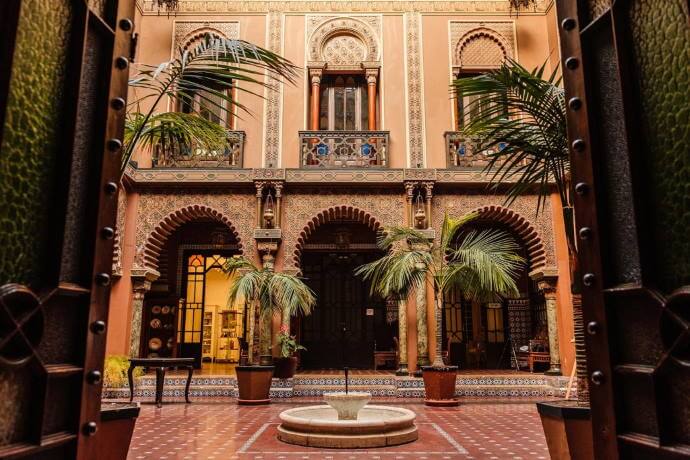
Strolling around one of the busiest restaurant streets in downtown Lisbon, one could hardly guess that one of the doors hides a beautiful oasis there. Leaving the streets bustle and climbing the stairs of the number 58 at Rua Portas de Santo Antão, a peaceful courtyard welcomes you to the stillness of Casa do Alentejo and the façades with the adorned Moorish style windows. The building itself was a manor house from the 20th century, that later served as one of the first casinos in Lisbon. The association links and gathers all people from Alentejo, in southern Portugal, that live in Lisbon area, and hosts several events to promote the culture of the region and features two restaurant areas: The top floor restaurant, for more formal meals, and the tavern, right of the courtyard for more casual regional food.
11. Enjoy the unique shops at Chiado, Bairro Alto and Principe Real
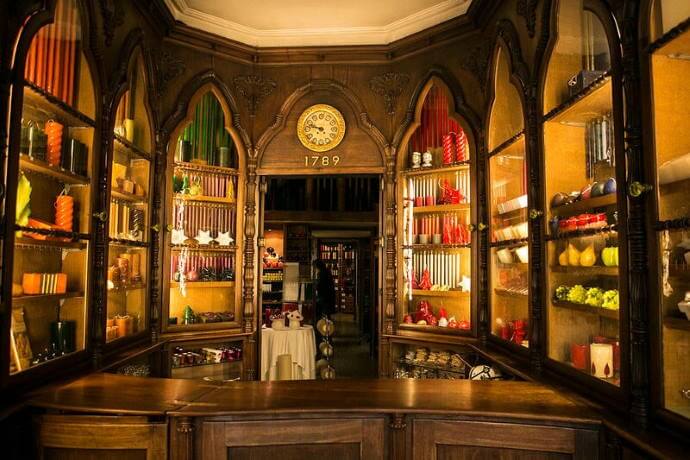
Lisbon can also be a shopping destination. Starting with the Avenida da Liberdade, that features some of the most glamourous stores in the city such as Gucci or Cartier, to the streets of Chiado and Bairro Alto, where you can find some unique shops that can offer you original tokens or souvenirs to bring home with you. Caza das Vellas Loreto, for instance, is a shop that, since 1789 has been producing handmade candles and is a true boutique in which you can choose a candle by its shape, purpose, scent or if it is a candle for a special ceremony. Another historic shop is Casa Macário, in Rua Augusta, that for centuries has been selling coffee, tea, chocolate, biscuits, candy and wine. In Bairro Alto, the Fábrica dos Chapéus has unique artisanal hats for every taste, genre or season. In a Vida Portuguesa shop you will find a true range of traditional retro made in Portugal products. And in Principe Real, a former new-arabian palace was turned into Embaixada, a shopping gallery that hosts Portuguese brands, artists, creators and designers.
12. Admire the Portuguese Tiles
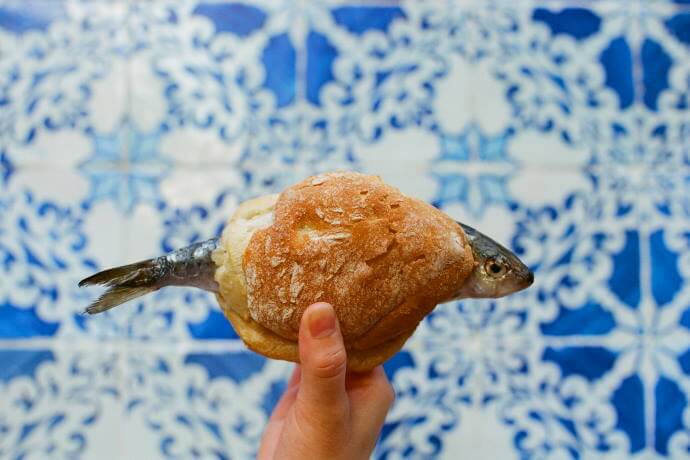
You may have seen it a bit all around the city. But, to get a deeper knowledge of the history of the tile in Portugal as a major cultural expression and vehicle of history, nothing better than a visit to the National Tile Museum. Housed in an historic 16th century convent, the building itself, with its cloisters, is worth a visit, furthermore with the museum showing the history of tiles and its evolution from the 16th century until today.
13. Eat local style

Part of knowing the Portuguese culture is knowing its gastronomy. And if you are a foodie, there are some restaurants that should be on your list in Lisbon to eat and dine like a local. The Ramiro justifies its queues, with its fantastic seafood, along a fresh and cool beer and the Solar dos Presuntos, a family-run home, serves the heart-warming dished of northern Portugal. The Cervejaria Trindade, adorned with beautiful tiles, is known for serving some of the best steaks in town and in the Leitaria “A Camponeza”, a former milk shop, offers good value for money traditional Portuguese food.
14. Immerse in the city nightlife
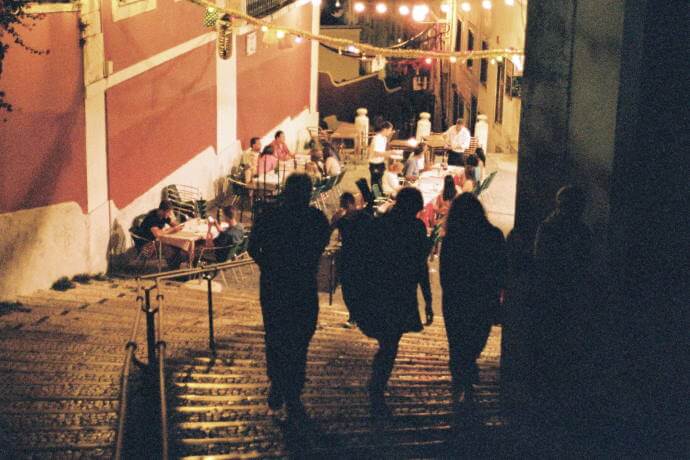
Lisbon is known also for its clubbing scene, hosting one of the most popular dance clubs in Europe, the Lux Frágil. However, there are several other ways to enjoy the city after the sun sets and without calling it an early night. We have mentioned Fado performances before, but other traditional activity is to sip a Ginjinha. This sweet liquor is very appreciated and there is almost a triangle of bars serving it all around Rossio. The A Ginjinha, Ginjinha Rubi and Ginjinha Sem Rival. The best? Well, you will have to find out for yourself. There are also several terraces and outdoor bars in Bairro Alto and Bica neighborhoods left to discover.
15. Take the cacilheiro and admire the best view over Lisbon
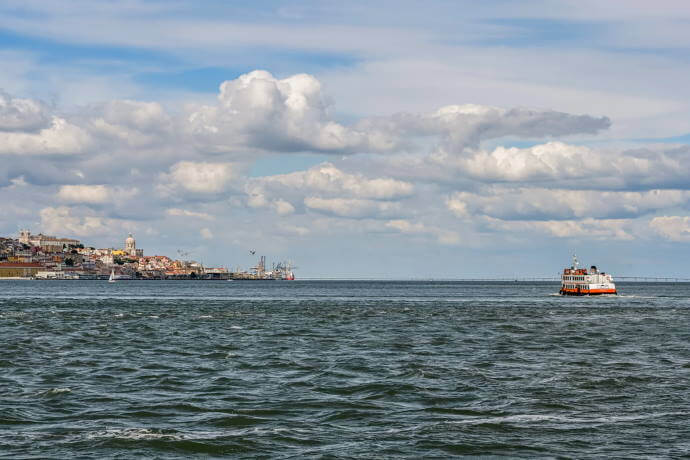
The cacilheiro, in its own tune, balances slowly in rhythm with the waves of the Tagus. Connecting Lisbon and Cacilhas, hence the name of the boat, in 10 minutes, this boat makes a beautiful ride between both the banks of the river. Be sure to take the boat at sunset, to admire Lisbon’s beautiful light, in shades of orange, pink and yellow. Upon your arrival, you will have a unique view over the city, as the navigators once did. In Cacilhas, there are several river front restaurants, mostly with seafood specialties you should try, such as the Farol, just outside the pier and the Ponto Final, a 10 min walk.



